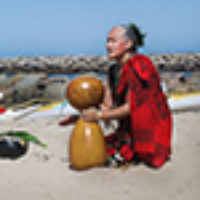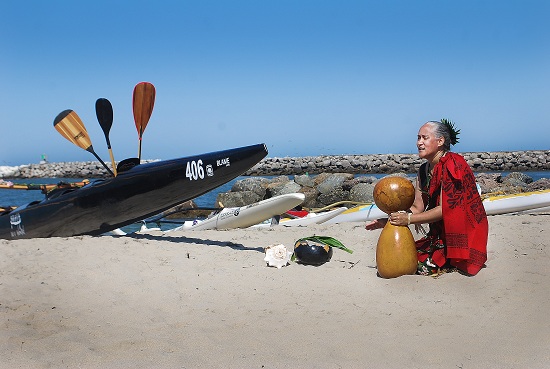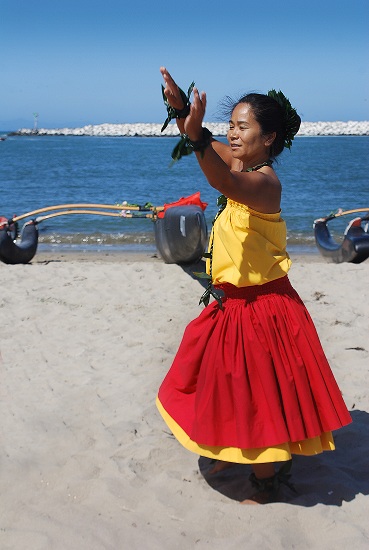
Sylvia Puananiha’aheo Edgar
Hawaiian hula is an indigenous dance form accompanied by oli (chant) and mele (song). The oli and the hula dramatize and accentuate the mele, which carries valuable information: history, genealogy, religion, geography, geology, etc.
There are many styles of hula which have been divided into two main categories. Kahiko (ancient), as performed before Western encounters with Hawaii, which is accompanied by traditional instruments such as the ipu heke, a double-headed gourd that keeps the beat for the hula and oli. Hula as it evolved under Western influence in the 19th and 20th centuries is called ‘Auana, and is accompanied by musical instruments such as the guitar, the ‘ukulele, and/or the bass.
Sylvia Puananiha’aheo Edgar first learned ipu heke playing, chanting, and Hawaiian ceremony conducting from Haina Kalehualaha’ole Blaisdel in Oxnard, California, in 1975. Sylvia studied intensively with him for 4 years and graduated as a Kumu Hula (hula teacher) under him. After opening her own hālau (hula school), Hula Halau O Puananiha`aheo, Sylvia studied with, and eventually graduated as a Kumu Hula, under Frank Kawaikapuokalani Hewett, one of the most revered internationally recognized figures of Hawaiian performance. Sylvia is an accomplished teacher and producer of hula performance in her own rite, in both ancient and modern styles, but is also skilled in the rituals surrounding teaching, performance, and traditional transmission of hula from master to advanced student.
Sylvia was a master artist in ACTA’s Apprenticeship Program in 2013, working closely with her apprentice Rona Pualanina’auali’ioha Koe focusing on the ipu heke, while teaching music, chants, dance, and ceremonial aspects of Kahiko.


